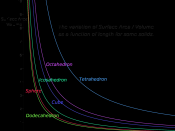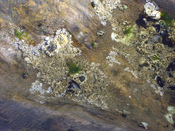Aim:
1) To investigate the types of plants and animals that occur in the tidal rock-shelf ecosystem.
2) To measure some physical and chemical components.
3) To measure distribution and abundance of tidal rock-shelf animals.
4) To investigate adaptations of organisms to the tidal rock-shelf ecosystem.
Introduction:
Long bay located on the southern side of long reef point has a variety of abiotic factors causes some organisms of the same species to not live with each other because they are not adapted. Organisms that subsist in tidal rock-shelves are subject to great physical and chemical variations such as, salt concentration, temperature, and acidity. Different areas of the tidal rock shelf experience different physical and chemical conditions, which affects the distribution and abundance of tidal rock-shelf organisms.
Apparatus:
Refractometer
Quadrat
Universal indicator
Dichotomous key folders
Salinity meter
Sample bottles
Hand lens
bucket
Methods:
A) Abiotic factors
1) To measure the PH value of water, fill the sample bottle approximately 1/3 full with water from the sea and rock-pool.
Add five drops of universal indicator solution and compare the colour produced with the colour chart.
2) To measure and record the temperature at:
I) A depth of 5cm below the surface in a rock pool at a rock pool at the highest level.
II) The ocean
III) Air, however first wipe the thermometer from any water in order to get accurate results.
3) For salt concentration collect two samples of water from the sea and rock pool. Use the salinity meter to measure the salt content of your water.
B) Distribution and Abundance
1) form groups.
2) Each group determined the abundance of rock shelf animals above the high tide mark by using a quadrat
3) Determine the abundance at the tidal rock pool using a quadrat.
4) Determine the abundance at...



Meh...
The essay is informational, but doesn't give the kind of real scientific info that would be necessary for a more professional piece. Good try.
1 out of 2 people found this comment useful.